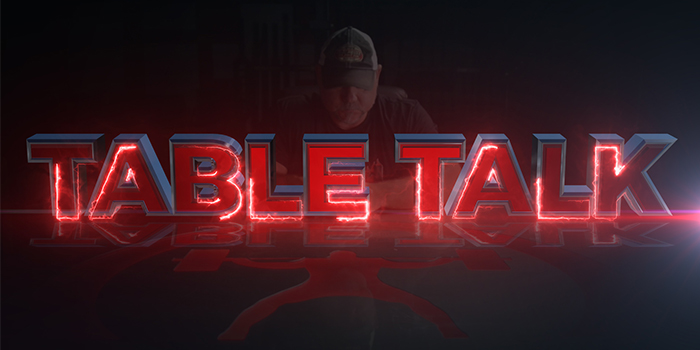
There are two divergent opinions on bar path for bench pressing:
1. Bench press in a straight line from touch point to lockout, thereby reducing total range of motion. This relies on the logic that the shortest path between Point A and Point B is as straight line.
2. Bench press in an arc, pressing the bar from your touch point back over your face. This relies on the argument that straight-line movement only works in a two-dimensional concept, while bench pressing actually occurs in the three-dimensional world. This means that "the shortest path of a straight line" is not necessarily the most efficient or most effective.
For this week's Table Talk, Dave discusses these concepts in response to a question about pressing path.
From Instagram user bigtree30:
"I have an elite level bencher helping me with my bench both raw and geared. His accomplishments are 760 single-ply and I think 840 multi-ply. He teaches to bench back over the face on the press motion of the bench. what is the benefit and/or hampering of this technique compared to benching in a straight line?"
Dave's method for answering this question is to first define technique, form, and style, and then explain how each will evolve over time:
Technique — What a lifter must do properly to get the highest outcome with the lowest possibility of injury. Good technique increases both strength and safety. Most technique rules apply to all lifters in a general sense (i.e., extreme knee valgus for the squat or excessive internal shoulder rotation while benching increase likelihood of injury for all lifters).
Form/Style — The unique factors that make an individual lifter strong, but do not apply to all lifters. An example of this is Steve Goggins' squat. Steve is one of the greatest squatters of all time and is the first man to ever squat 1100 pounds in a competition. If most lifters tried to emulate Steve's squat, though, they would become much weaker than using more traditional technique.










